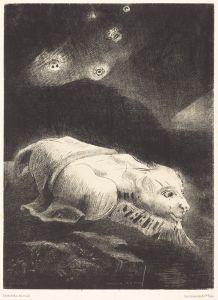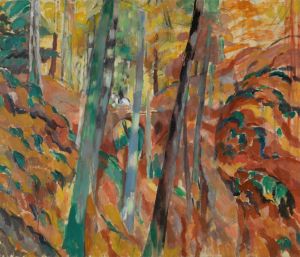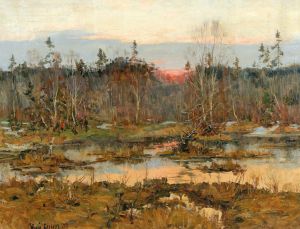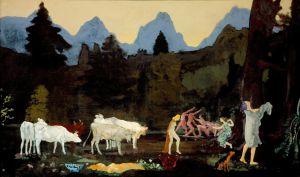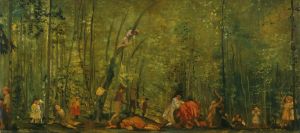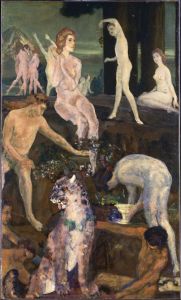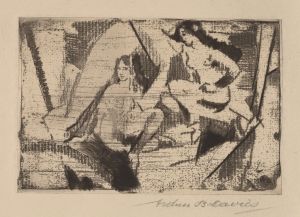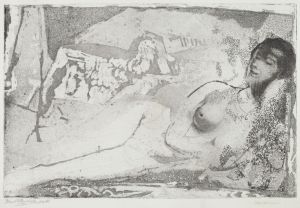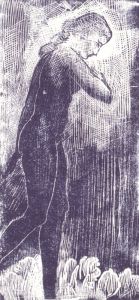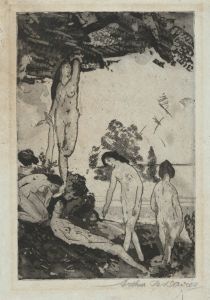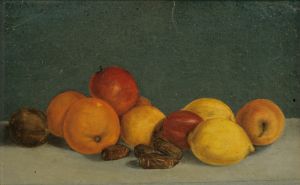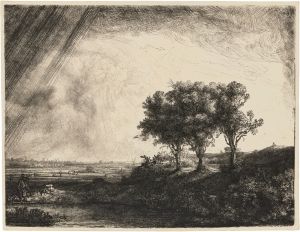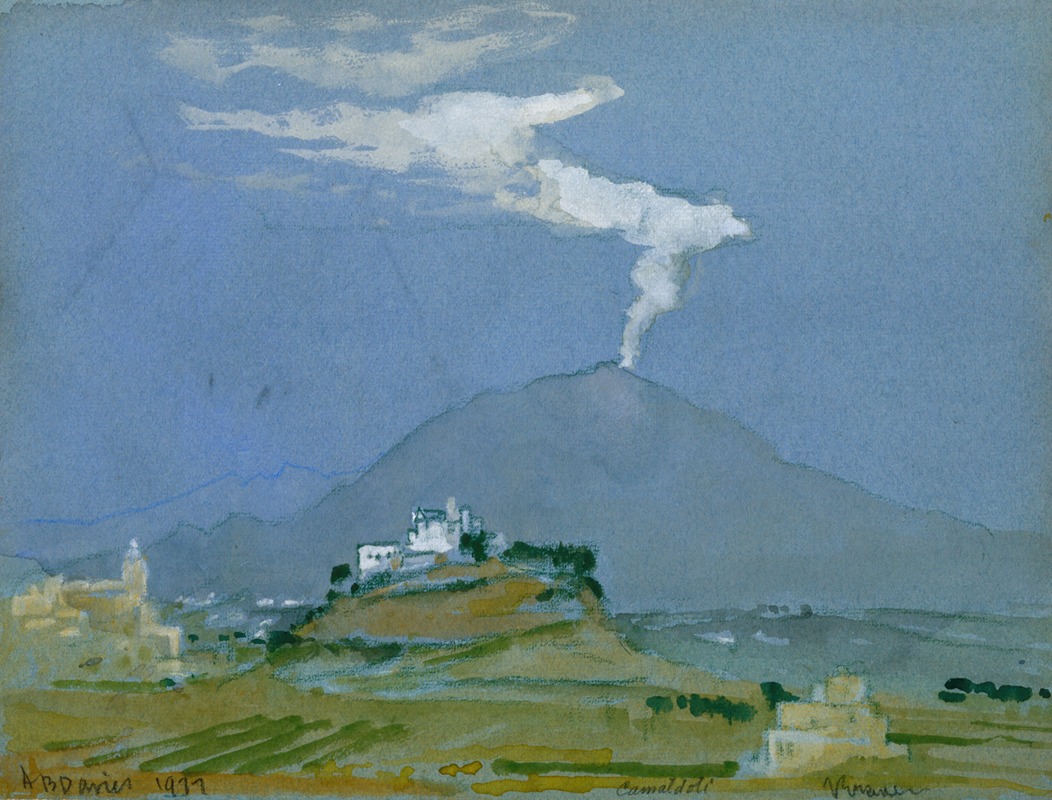
Landscape
A hand-painted replica of Arthur Bowen Davies’s masterpiece Landscape, meticulously crafted by professional artists to capture the true essence of the original. Each piece is created with museum-quality canvas and rare mineral pigments, carefully painted by experienced artists with delicate brushstrokes and rich, layered colors to perfectly recreate the texture of the original artwork. Unlike machine-printed reproductions, this hand-painted version brings the painting to life, infused with the artist’s emotions and skill in every stroke. Whether for personal collection or home decoration, it instantly elevates the artistic atmosphere of any space.
Arthur Bowen Davies was an American artist known for his contributions to the American modernist movement in the early 20th century. Born on September 26, 1862, in Utica, New York, Davies was a pivotal figure in the transition from 19th-century academic art to the modernist styles that emerged in the early 20th century. He is often associated with the Ashcan School and was a key organizer of the 1913 Armory Show, which introduced European avant-garde art to the American public.
Davies's work is characterized by its dreamlike quality, often depicting ethereal landscapes and allegorical scenes. His style is noted for its lyrical and poetic qualities, blending elements of symbolism and romanticism. While he was involved with the Ashcan School, his work diverged from the gritty urban realism that characterized much of the group's output. Instead, Davies focused on more idealized and mystical subjects.
"Landscape" by Arthur Bowen Davies is one of his many works that exemplify his unique approach to painting. While specific details about this particular painting are limited, it is consistent with Davies's broader body of work, which often features serene and harmonious compositions. His landscapes typically convey a sense of tranquility and often include figures that appear to be in a state of contemplation or harmony with nature.
Davies's landscapes are known for their soft color palettes and fluid forms, which create a sense of movement and rhythm within the composition. He often employed a technique that blurred the boundaries between figures and their surroundings, creating a seamless integration of human and natural elements. This approach reflects his interest in the transcendental and the spiritual, themes that were prevalent in his work.
Throughout his career, Davies was influenced by a variety of artistic movements and styles. He was particularly drawn to the works of the Symbolists and the Pre-Raphaelites, whose emphasis on mythological and allegorical subjects resonated with his own artistic vision. Additionally, his exposure to European modernism, particularly the works of artists like Paul Cézanne and Henri Matisse, informed his development as a modernist painter.
Davies's role in the 1913 Armory Show was significant, as he served as the president of the Association of American Painters and Sculptors, the organization responsible for the exhibition. The Armory Show was a landmark event in American art history, showcasing works by leading European modernists alongside American artists. It played a crucial role in shaping the direction of American art in the 20th century, and Davies's involvement underscored his commitment to advancing modernist ideas.
Despite his contributions to modernism, Davies's work often retained a sense of nostalgia and romanticism, setting him apart from some of his more radical contemporaries. His landscapes, including "Landscape," reflect a synthesis of traditional and modern elements, capturing the beauty and mystery of the natural world while embracing new artistic possibilities.
Arthur Bowen Davies passed away on October 24, 1928, in Florence, Italy. His legacy as an artist and advocate for modernism continues to be recognized, and his works remain an important part of American art history. While specific information about "Landscape" may be limited, it stands as a testament to Davies's enduring influence and his ability to capture the essence of the natural world through his unique artistic vision.





